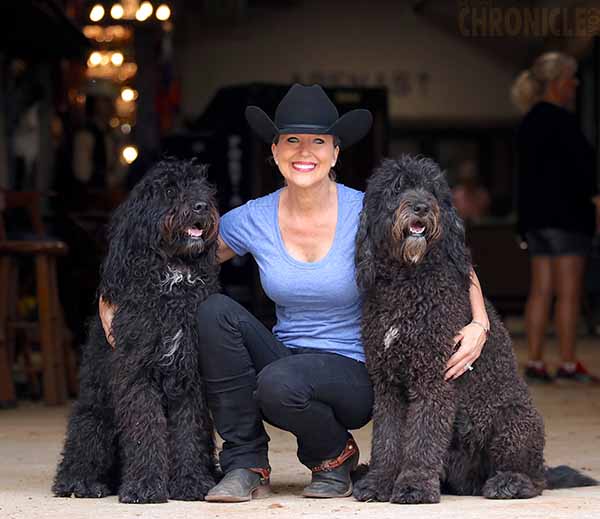Canine Companions Help Owner, Amy Novacek, Compete at APHA World Show
If you watched Novice Amateur Trail at the APHA World Show earlier this week, you may have noticed two enormous, black Labradoodles pacing by the rail anxiously awaiting for their owner, Amy Novacek, to complete her class. At first glance, the sight of a dog waiting for his owner seems quite ordinary. After all, everyone has dogs at the horse show. But these are no ordinary dogs, and Amy is certainly no ordinary exhibitor, as we later came to discover.
Amy suffers from adrenal insufficiency, commonly known as Addison’s disease, a condition where the adrenal glands don’t produce the necessary amount of certain hormones. Symptoms can range from severe abdominal pain, vomiting, and muscle weakness to weight loss, kidney failure, and even death.
In many cases, it’s a traumatic event that brings on a worsening of symptoms. For Amy, it was a severe car accident that happened in December of 2013. Unfortunately, the accident brought it’s own shares of problems as well. “I’ve had probably 20 surgeries,” Amy says. “I’ve shown horses my whole life; but, after sustaining a traumatic brain injury, I had to learn how to speak again. When I’m tired, I stumble over my words and my thoughts. In one eye, I see double, and in one ear, I don’t hear very well. So, for example, in Trail, when you see 50 logs, I see 75 or 100.”
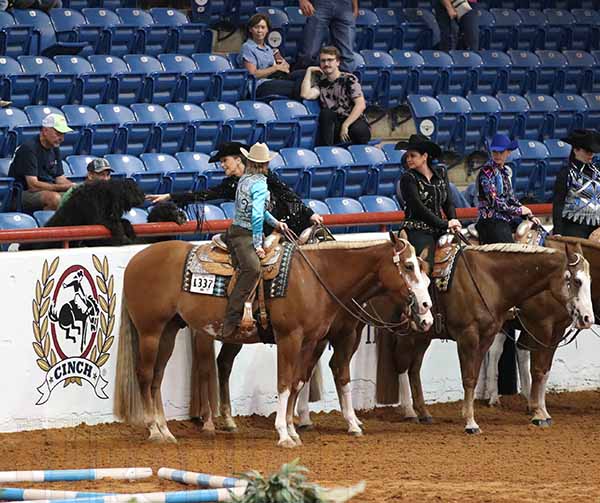 “I’ve adjusted to it over the years. I was in physical therapy for four days a week for two and a half years. But, when I got back into horses, that did more for my hand-eye coordination than anything else. For the first year and a half, I was running into walls. My husband, Jay, would have to walk with me, because I would smack into the door, because my equilibrium was off. But, over time, our bodies and brains adjust.”
“I’ve adjusted to it over the years. I was in physical therapy for four days a week for two and a half years. But, when I got back into horses, that did more for my hand-eye coordination than anything else. For the first year and a half, I was running into walls. My husband, Jay, would have to walk with me, because I would smack into the door, because my equilibrium was off. But, over time, our bodies and brains adjust.”
Amy was diagnosed with Addison’s disease in October of 2016. Around the same time, she attended a horse show in Houston with her 7-year-old, APHA gelding, Sensational Sugardaddy, aka “JD.” It was shortly after a riding session when one of her dogs alerted her that something wasn’t right. “I got really dizzy, and, before I realized what was happening, he alerted me, and I got off my horse. A lot of times, he will know that there is a problem before I do.”
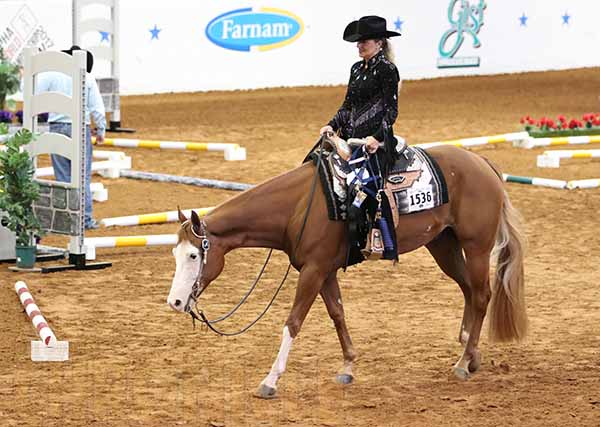 That dog was one of Amy’s two canine companions, litter mates Hank and Buddy, who are one and a half-year-old Labradoodles. Buddy serves as Amy’s mobility dog, and Hank is her medical alert dog. “When I ride all day, or just have a bad day, Buddy is my mobility dog. He helps to stabilize me. It’s more so after I ride or when doing things like going up and down stairs. He pulls me up or steadies me when I’m going down.”
That dog was one of Amy’s two canine companions, litter mates Hank and Buddy, who are one and a half-year-old Labradoodles. Buddy serves as Amy’s mobility dog, and Hank is her medical alert dog. “When I ride all day, or just have a bad day, Buddy is my mobility dog. He helps to stabilize me. It’s more so after I ride or when doing things like going up and down stairs. He pulls me up or steadies me when I’m going down.”
While Buddy helps Amy with the physical challenges associated with her disease, Hank’s role is to alert Amy if her medication levels drop too low. “I take meds three times a day for my disease. They keep me alive. If I don’t have them, I would die. It’s kind of like being a diabetic, but you can’t test for it every day, so you have to be really steady on your meds.”
“Your adrenal glands are what keep all your organs working, keep your body functioning, and give you strength. Mine don’t work. When I run really low, Hank will alert me by pawing at me. If I get really low, he will paw at me and lick me. If I’m asleep, he will paw me in the chest until I wake up.”
When we conducted this interview, Amy had just finished competing in Novice Amateur Trail with her horse, Sensational Sugardaddy, placing fourth. As a result of the big morning, Amy was considerably weak. During the final placings of the class, when each horse and rider team were lined up against the rail, Hank was concerned and jumped up on the rail to check on Amy. Afterwards, the 100 pound doodle (for all intensive purposes) sat in her lap, pawed at her chest, and licked her arms.
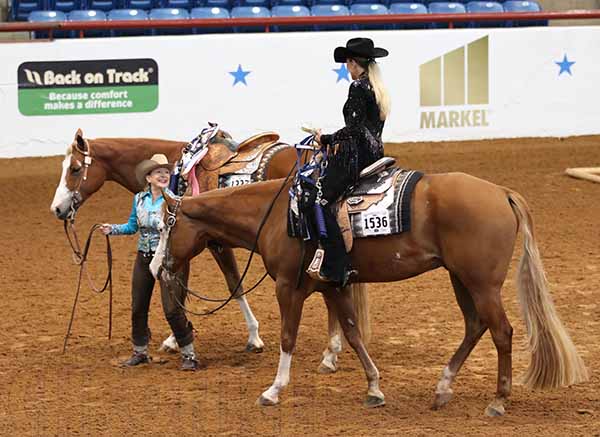 “Right now, when I get weak like this, he will not leave my side. Buddy knowns his job, and he sticks around; but, Hank knows when I’m weak and will be in my lap, just like this. I’m weak right now, so it would probably be good if I took more meds. Now, when I take my meds, he will go on his way. It’s bizarre.”
“Right now, when I get weak like this, he will not leave my side. Buddy knowns his job, and he sticks around; but, Hank knows when I’m weak and will be in my lap, just like this. I’m weak right now, so it would probably be good if I took more meds. Now, when I take my meds, he will go on his way. It’s bizarre.”
Despite all the difficulties associated with such a challenging diagnosis, Amy is positive, optimistic, and thankful for every day she gets to spend with her beloved animals. “At the end of the day, I feel so blessed to be here and be on my horse, which is amazing. When I got back into showing horses, Patti Carter of AQHA started the hardship program so people could get their novice cards and give them the experience to start over again. Then, APHA adopted my novice card too. It’s a gift to me. It has really accelerated my progress, and I’m doing things today that there’s no way I would’ve every thought I would’ve done.”
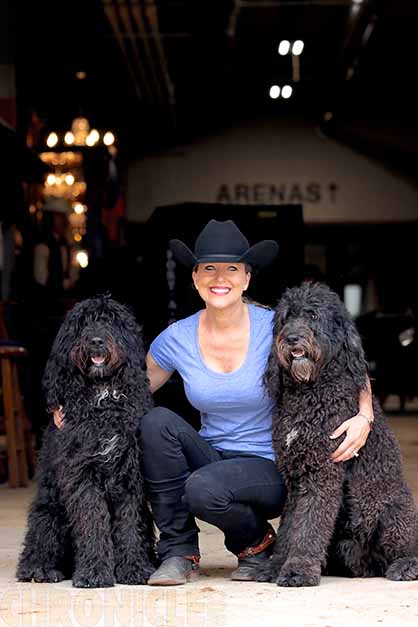 Amy, JD, Hank, and Buddy partnered with Simons Show Horses in March of this year to take her horse show career to the next level. She praises the team’s patience, tolerance, and ability to develop a safe and consistent mount for a rider with special needs. “They’ve really been amazing. They’ve made my horse so much better for me to ride, and they’re patient with me. Most riders would adapt and adjust to things; but, I forget things. My heart and mind may want to do something, but my body might say I can’t that day.”
Amy, JD, Hank, and Buddy partnered with Simons Show Horses in March of this year to take her horse show career to the next level. She praises the team’s patience, tolerance, and ability to develop a safe and consistent mount for a rider with special needs. “They’ve really been amazing. They’ve made my horse so much better for me to ride, and they’re patient with me. Most riders would adapt and adjust to things; but, I forget things. My heart and mind may want to do something, but my body might say I can’t that day.”
“These are animals, and that’s what people sometimes forget. What they do for us is so incredibly amazing, and it’s such a blessing. People get so mad sometimes at horse shows, and we need to all stop and remember why we’re here. Everything else is a bonus.”










